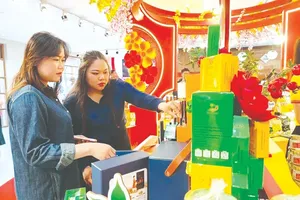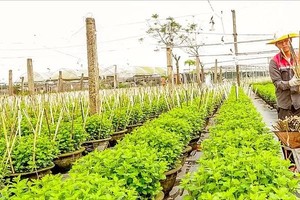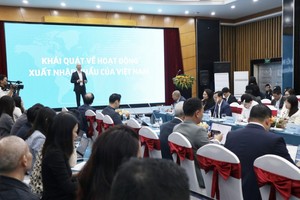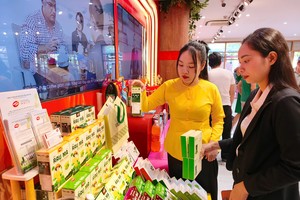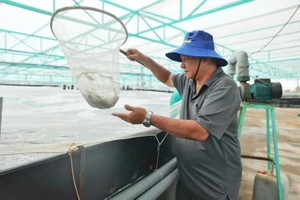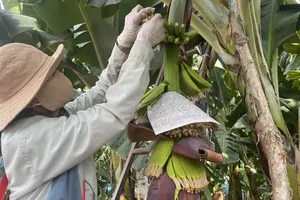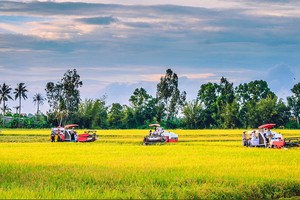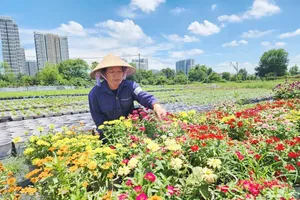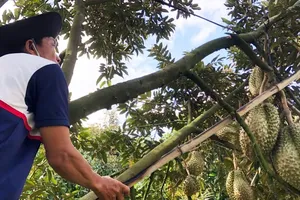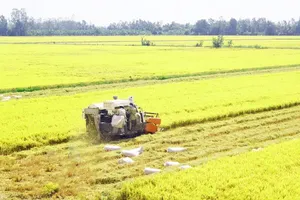Da Lat is endowed with perfect weather for growing flowers, but with local floriculturists trailing their foreign counterparts in this regard, the Central Highlands city needs to devise plans for the sector’s sustainable development.
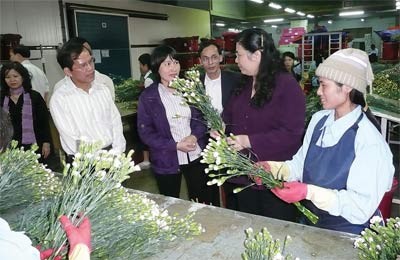
Da Lat is a major supplier of flowers to the local and foreign markets.
Tran Huy Duong, chairman of the Da Lat Flower Association and director of Langbian Farm, said floriculture is highly profitable business in which yield is calculated per square meter unlike per hectare as it is done for other crops.
For instance, he said, 27 lilies can be planted on an area of one square meter, and at a net profit of VND1,500 per flower and three crops a year, the profit can be over VND1 billion a hectare.
Though the floriculture industry has been developing at a rate of 30 percent a year, scientists and businesses are worried about its future sustainability.
Mr. Duong said flower farming in the city is unplanned to explain its unsustainable nature.
For instance, he said, people grow lily because it generates huge profits, and so many lily bulbs were imported last year that farmers in the Netherlands could only supply 70-80 percent of the demand.
But the flowers are sold mainly in the local market and not exported, meaning any further expansion could send supply soaring above demand, he said.
Planning, funds needed
Da Lat’s floriculture industry needs methodical planning, with specific flowers grown in certain seasons and for certain markets, Mr. Duong said.
There are 16 foreign floriculture companies in Da Lat and they are successful since they determine their partners and markets clearly. They grow their flowers mostly based on export orders they have in hand.
Dalat Hasfarm grows temperate flowers like roses, tulips, lilies, carnations, and daisies, harvesting around 70 million annually and exporting 80 percent of them to Japan, Taiwan, Australia, Indonesia, Singapore, Thailand, and Cambodia.
Lam Thang Company in Di Linh District grows certain kinds of orchids and Truong Xuan Company in Bao Lam District grows orchids and roses.
But unlike them, Vietnamese farmers rush to grow whatever flowers they think are in demand and do not bother to wait until they get purchase or export orders.
They also suffer from a funds shortage, which prevents them from acquiring the latest technologies or investing in quality.
While Dalat Hasfarm invests VND5-7 billion in a hectare of greenhouse, Vietnamese companies and farmers spend VND3 billion on average.
Farmers also have problems getting loans. Even if banks agree to lend, the amounts are small and the periods, short.
The Da Lat Flower Association said not many farmers were able to get loans under the Government’s recent stimulus package and so there hasn’t been much change in the floriculture sector.
The city needs to realize that floriculture is a key economic sector and organize the farm sector effectively so that all activities from growing to selling become efficient.
Now, almost all flower farms are small -- from just a few thousand square meters to a maximum of 1 or 2 hectares – that the farmers do not cooperate with buyers or consider exports.
The Government needs to help them with funds, technologies, and finding markets if the sector is to develop.
